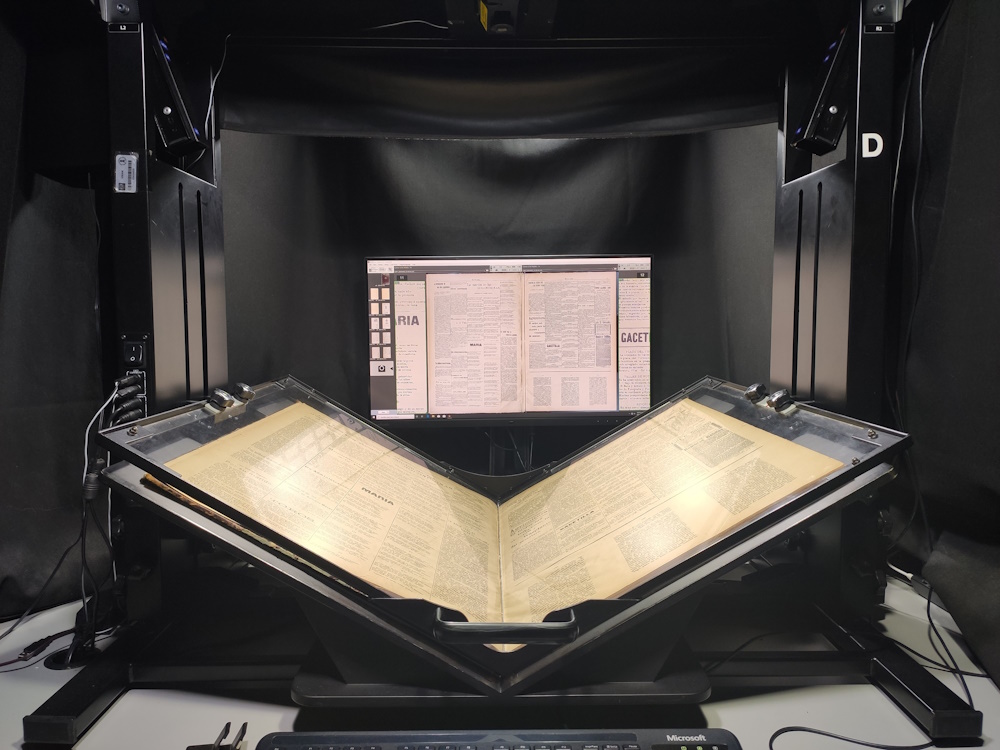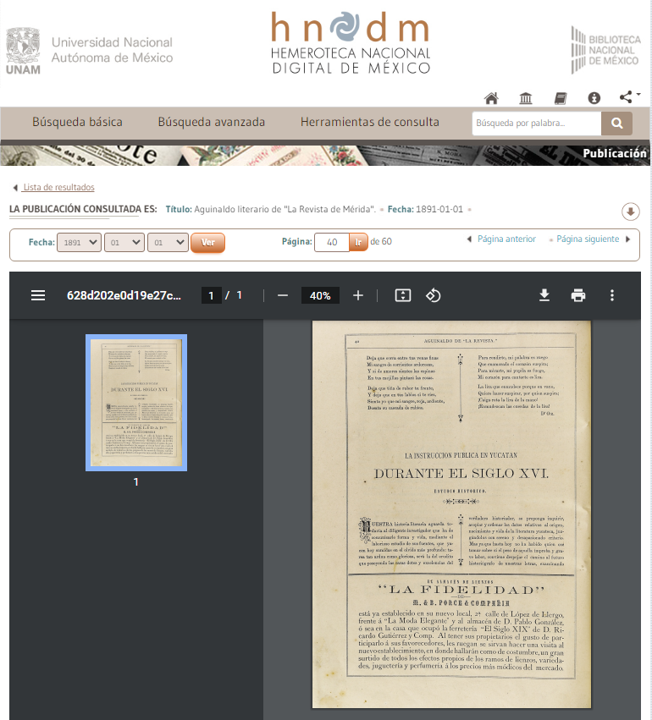
The HNDM is a project that addresses different needs. Through digitization, printed documents are protected by limiting their consultation; digital documents are generated and through an access platform they are distributed to users regardless of their geographical location. and through the implementation of digital preservation, a methodology and workflows are incorporated that provide evidence of preservation and allow the generation of authentic and reliable digital objects.
The images in the HNDM result from a series of processes that include evaluation and assessment, digitization, image processing, distribution and access on a web platform, incorporating documented digital preservation processes at each stage, facilitating the task of incorporating information packages into the permanent archive and its management.
 Both types of files, digitized and born-digital, undergo digital processing, consisting of several phases including metadata addition, validation and verification of digital objects, generation of checksums, creation of submission and dissemination information packages. A fundamental part of the incorporation of preservation processes in the HNDM was the automation of processes. For this purpose, software tools were created to perform preservation-related processes with minimal impact on the original digitization and access workflows.
Both types of files, digitized and born-digital, undergo digital processing, consisting of several phases including metadata addition, validation and verification of digital objects, generation of checksums, creation of submission and dissemination information packages. A fundamental part of the incorporation of preservation processes in the HNDM was the automation of processes. For this purpose, software tools were created to perform preservation-related processes with minimal impact on the original digitization and access workflows.
The metadata insertion software tool allows embedding descriptive, technical, and administrative metadata into digital objects. These metadata were selected following a rigorous registration of the minimum data necessary to describe a periodical publication. The metadata originally generated in MARC format are converted to Dublin Core and inserted into preservation and distribution images. Once the preservation digital objects are in TIFF or JPG format and their distribution version in PDF format, folders are generated according to specifications for creating submission information packages (SIP). Another software tool was developed to validate these specifications, which verifies file structure and naming, validates file formats, checks if images have materiality representation, embedded metadata, and text search capability. Once these verifications are done, it generates manifest files with checksums, creates submission and distribution information packages, and records information in a database.The validation stage and the corresponding programs and tools for this activity are of great benefit to the institution, as they allow the timely detection of errors or deficiencies that could pose problems for digital preservation actions. In a sense, preventive mechanisms were thought out to avoid deficiencies in the structure of digital files.
The last stage of the HNDM workflow is distribution or access. For this purpose, the HNDM web platform was updated with the creation of a Web Management System, a program developed to control and manage images integrated into the HNDM. Its structure allows interaction with the HNM Catalog to extract descriptive data and arrange titles of periodical publications into groups such as thematic collections, geographical location, temporal ranges, and basic search. This system also allows quantifying the number of titles and images entering the platform and detecting the number of users accessing the website to search for periodical materials.
 In addition to the programs developed, the team made up of members of the HNM of UNAM proposed to draft normative instruments to share experiences and standardize processes that may be useful for other national and international institutions. Currently available on the internet are the digitization policies and metadata policy of the HNM, and six manuals that form the basis for preservation, digitization, digital processing, and access activities.The implementation of digital preservation in digitization and access workflows has had a significant impact on the institution, as the HNDM provides access to the digital heritage preserved by the institution, allowing researchers, professors, and general public to research, use, and create new content; while adopting a new paradigm, with the aim of ensuring long-term access to authentic and reliable content for future generations.
In addition to the programs developed, the team made up of members of the HNM of UNAM proposed to draft normative instruments to share experiences and standardize processes that may be useful for other national and international institutions. Currently available on the internet are the digitization policies and metadata policy of the HNM, and six manuals that form the basis for preservation, digitization, digital processing, and access activities.The implementation of digital preservation in digitization and access workflows has had a significant impact on the institution, as the HNDM provides access to the digital heritage preserved by the institution, allowing researchers, professors, and general public to research, use, and create new content; while adopting a new paradigm, with the aim of ensuring long-term access to authentic and reliable content for future generations.






























































































































Planning ahead for DVD-Video migration research
Starting with complexity: Archiving digital-born music compositions from Mac systems of the 80s/90s